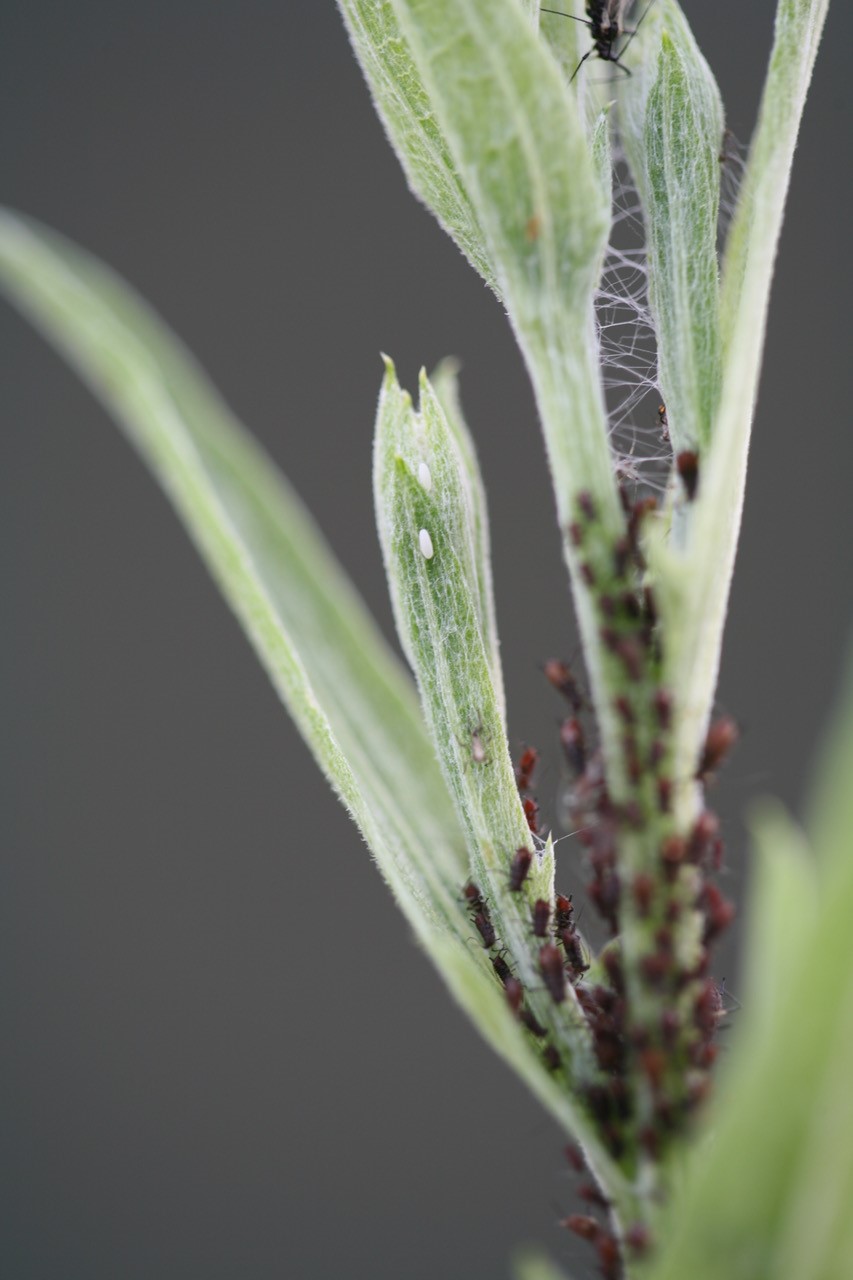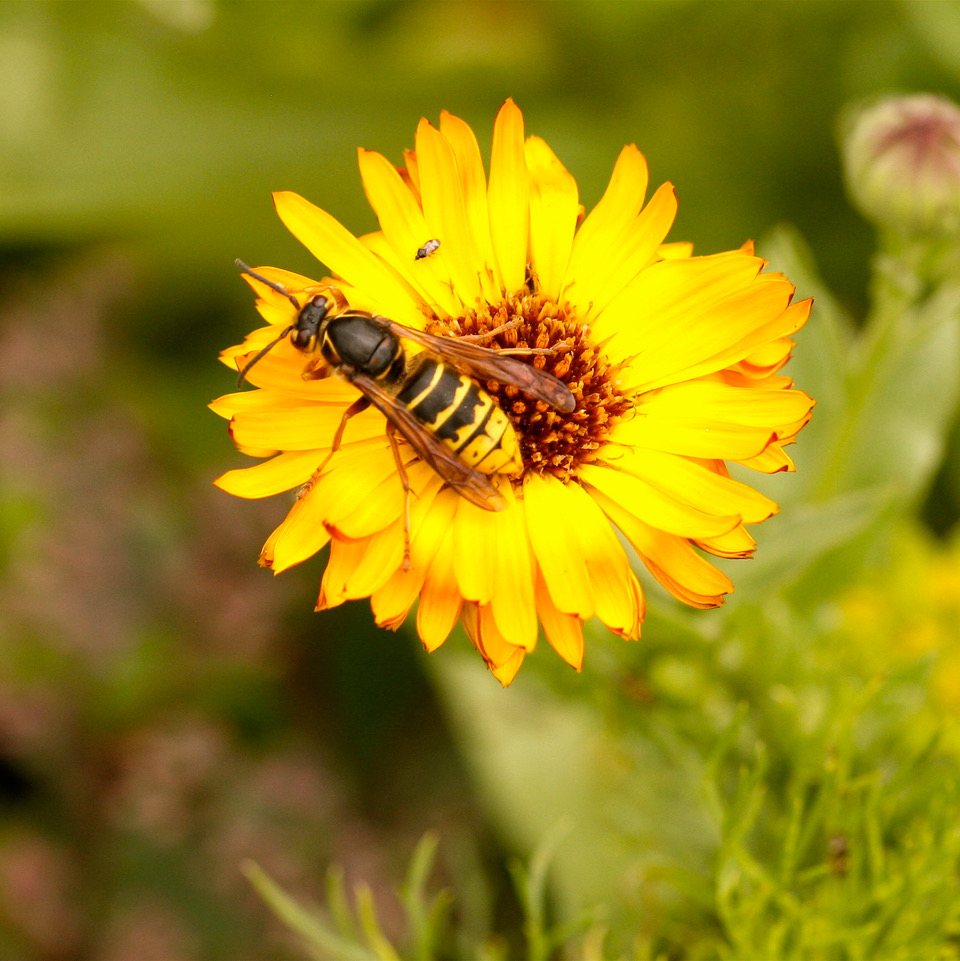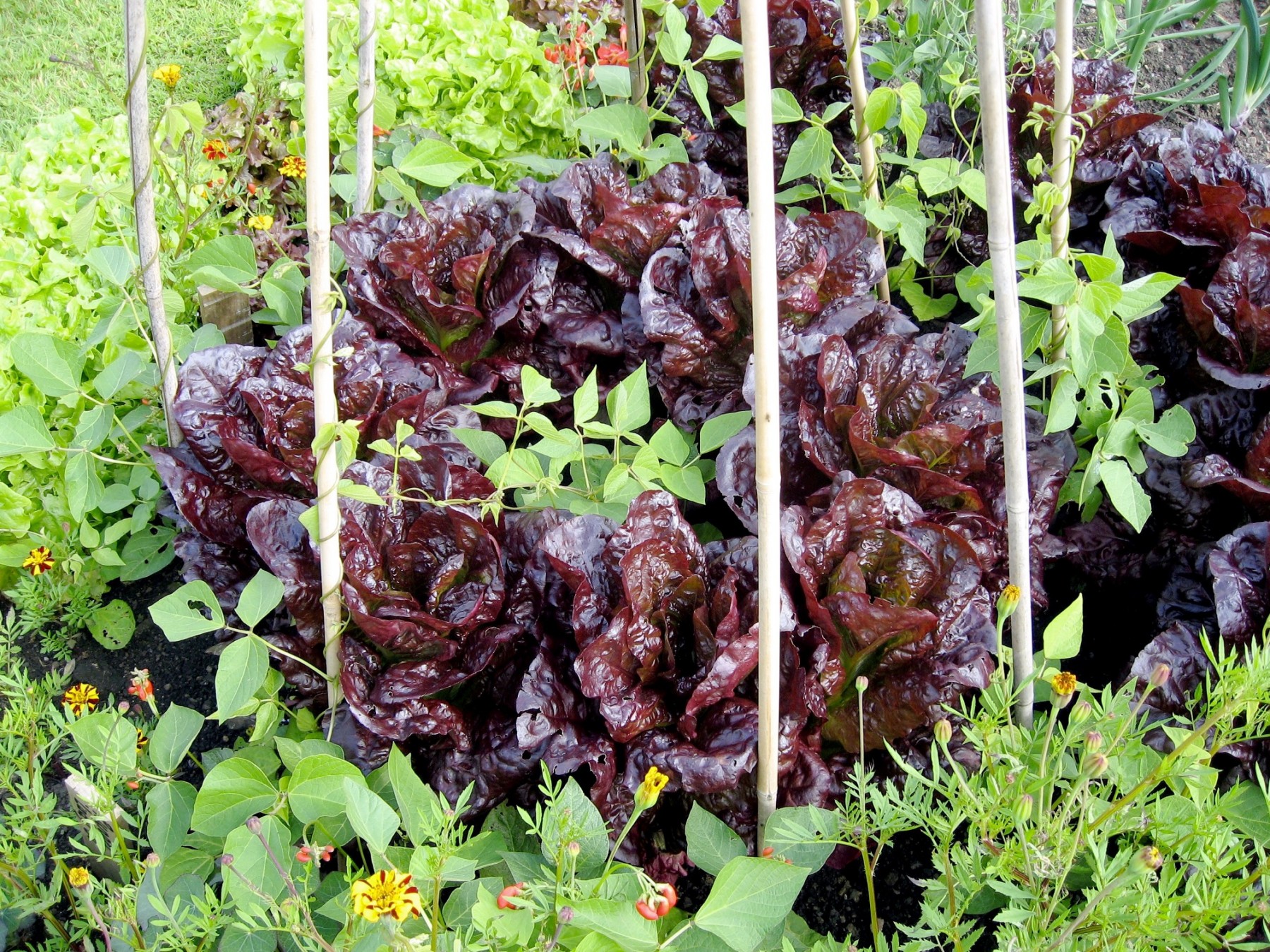
One of the things I use my greenhouse for is raising annuals every spring. One of my very favourites is the marigold because it flowers right through summer until the first frosts. The flowers come in sunny shades of mahogany-red, orange and warm-yellow and these colours attract hoverflies and pollen beetles. The hoverflies look like small wasps, although they don’t sting, and they get their name from their flight pattern. This resembles a helicopter hovering.
The hoverfly is a useful creature in the garden at almost every stage. The adults pollinate thereby helping seed set. Their small mouthparts mean they can’t access complex flowers, with long tubes, and they’re not strong enough to drag down the lip of a snapdragon or antirrhinum, for instance. Hoverflies need tiny flowers and they’re very fond of umbels, including astrantias and eryngiums. They’re also attracted by bright yellows and oranges.
Most garden hoverflies are beneficial because the females will lay one oval cream egg close to aphid and whitefly colonies. The small white creature emerges and begins to devour your aphids or other small pests. This is why many gardeners plant marigolds close to their vegetables, or inside their greenhouses. I always have some decoy plants close to my runner beans and climbing French beans, because young marigold plants are slug magnets. They’ll go they’re first and that protects my beans and makes them easy to collect at dusk.
The word marigold is confusing because there is a pot marigold ( Calendula officinalis), but the marigolds I’m talking about, species of Tagetes, have pungent foliage that hovers somewhere between mint and dried vegetation. The most commonly grown two are French marigolds ( T. patula) and African marigolds ( T.erecta). Both are from higher regions of Mexico, despite their misleading common names. T. patula is also found in Guatemala.
They’re high altitude plants, so they resist cool weather and this allows them to flower late into autumn in our gardens. The flowers are edible, although I’ve never eaten them, and In their native land they are added to salads and used to flavour butter. The flowers are also fed to poultry to produce rich-yellow yolks. The whole plant is distilled and then used in the perfume industry and it’s normally blended with sandalwood.
There is a gardening myth that says that pungent foliage deters pests such as whitefly and aphid. This was put to the test several years ago at RHS Wisley and I’m sorry to tell you that the whiteflies and aphids happily colonised the marigolds as well as the tomatoes. Further research at HRI Wellesbourne, on cabbage root fly, also concluded that aromatic plants don’t repel pests.
At the moment there’s a large marigold trial at RHS Wisley, a joint-venture between with Fleuroselect, who are based in the Netherlands. The trial covers French and African marigolds and they look very different. African marigolds tend to have much larger, fuller flowers on taller plants – hence the species name erecta. In countries like Thailand and India the flowers are threaded onto garlands, or used in other decorative ways.

One of the reasons for the trail is to see whether these fully double pom-poms could be useful in British gardens or municipal bedding schemes, because they’re bred to resist the rain. French marigold flowers tend to absorb water and then rot off. On the day I visited the temperature was above 30° C but there was little sign of scorch or distress on any of the plants, although they were being irrigated a couple of times a week by the curatorial staff. The white Vanilla varieties had frazzled a little.
The public are being asked to vote for their favourite. Mine was a new Burpees UK single variety called ‘Red Knight’. The mahogany-red, wavy-edged petals have a neat golden edge that matches a raised, almost-tufted middle, so it looks extremely neat and pristine. I fancy the foliage was a little greyer than most but the plants were still airy and there were plenty of flowers. It’s already on my list for next year. It’s available from Mr Fothergill’s and Dobies.
I also spotted some old favourites and they included ‘Naughty Marietta’, and single, golden flowers with maroon blotches said to have been grown in gardens since the 1850s. Another golden oldie, ‘Solan’, has quite double flowers with a roundel of yellow upright petals surrounded by a mahogany-red frill. These are both short varieties and the fact that they’ve been around so long must mean they’re very stable.
There were much newer ones too and I was very taken with a taller mixture form T & M called ‘Pots of Gold’. This mixture included a red, a striped one and a pumpkin-orange one. All three were single and all were the same sort of height, about two feet (60cm).
The 148 different marigolds on the trial had been started off in February and were planted out in early May. I usually sow mine in March, and it’s possible to place one or two large seeds in each gap in a modular tray and this saves pricking out. I try to get mine out before the Chelsea flower show although this year the cold spring held them back.
Taller, airier marigolds are grown in some of the country’s top gardens. If you’re lucky enough to visit William Robinson’s garden, Gravetye Manor in Sussex, you’ll see plenty of marigolds in the walled garden. The head gardener, Tom Coward, has created a special sort of magic since he arrived in 2010. Tom, who had previously worked with Fergus Garrett at Great Dixter, uses a Christopher Lloyd favourite called ‘Cinnabar’. Packets of seeds can be obtained from the Great Dixter on-line shop. It’s redder than most and reaches about 2 feet in height and the plants branch really well.

Sarah Raven sells another similar, airy red marigold, Tagetes linnaeus, although this might be slightly shorter. It’s also sold under another name, ‘Burning Embers’, and it makes a great cut flower apparently. They’ll look glorious in August, September and October and provide little specks of warm colour. Mix them with blue annuals such as Clary ‘Blue Denim’ and blue cornflower Centuarea cyanus, although you will have to deadhead the cornflower to keep it going otherwise it will pack up in July.
I love to see my marigolds with gone-to-seed lettuces. They form green and burgundy-red miniature fir trees of leaf and the chickens get one a day. I had a French friend who always said that lettuces kept them laying.
Allow some of your marigolds to set seed because these large, easily storable seeds can be dried and kept ready for spring sowing in the following year. If you’ve plenty of seeds, sprinkle some of them about.











